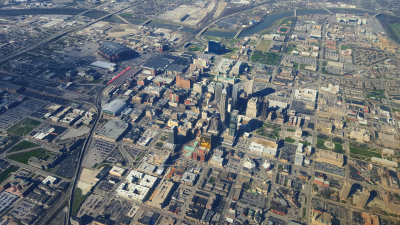Transit-Oriented Development Under Attack In New York Suburbs?
Stamford, Conn. is considering changes to zoning that would reduce density and increase mandatory parking.

This isn’t transit-oriented development. It’s the opposite of transit-oriented development.
The city of Stamford in New York’s northern suburbs will consider a zoning change that would reduce densities and increase mandatory parking minimums in two neighborhoods next to the Metro-North’s New Canaan Branch — a move that opponents fear would lead to less rail-friendly projects.
The proposal [PDF] for the mini-towns of Glenbrook and Springdale does not mention transit as a goal, but instead touts that it would “protect single-family neighborhoods, improve urban design, lower densities [and] increase parking.”
Both neighborhoods were rezoned about a decade ago with help from the Regional Plan Association to support more development along the Metro-North trunk line. The main result would be reduced density — by one-third — and mandatory parking rising from the current one-and-a-half spaces per two-bedroom apartment to two spaces per two-bedroom apartment.
Studies show that the availability of parking greatly increases the likelihood that residents will have their own cars — even though both Glenbrook and Springdale were built next to commuter rail stations.
On the plus side, the rezoning calls for a slight increase in below-market-rate housing in new developments.
“The city is doing this trying to make these communities more ‘transit and pedestrian friendly,'” a Stamford resident told Streetsblog on Monday. “Clearly, these proposed changes do the opposite of that. As someone who cares about cities and urban design, I am disheartened about this.”
The zoning board will take up the matter on Monday night at 8:15 p.m.


